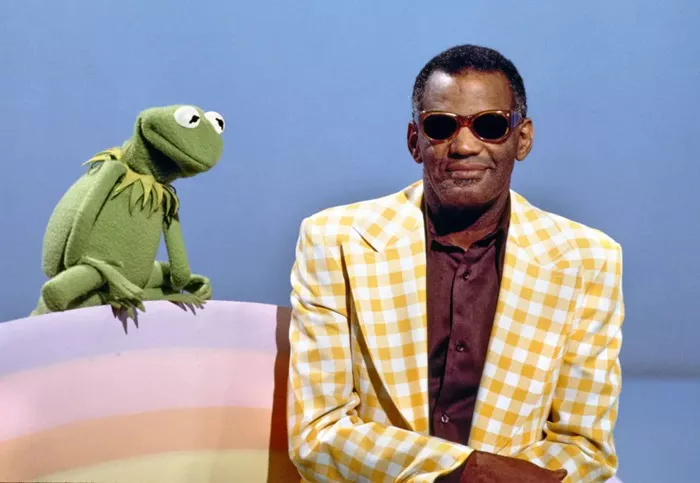Ray Charles, a legendary figure in the world of music, is known for his incredible contributions to various genres, including R&B, soul, and gospel. Yet, there is one facet of his career that often remains underrated – his foray into country music. In this article, we will delve into the life, career, and works of Ray Charles, with a particular focus on his remarkable journey in the realm of country music.
Ray Charles: A Musical Prodigy Emerges
Ray Charles Robinson, born on September 23, 1930, in Albany, Georgia, faced considerable adversity in his early life. At the age of seven, he lost his sight due to glaucoma. Despite this formidable obstacle, Charles showed an innate musical talent from a young age. He attended the Florida School for the Deaf and Blind, where he honed his musical skills, learning to read and write music in braille. This early education played a pivotal role in shaping his musical genius, which would later transcend the boundaries of genre.
Country Roots and Influences
Country music, deeply rooted in American culture, had a profound impact on Ray Charles. His childhood was filled with the sounds of the South, including blues, gospel, and country music. In particular, artists like Hank Williams, who was one of the most significant figures in country music, played a pivotal role in shaping Charles’ musical sensibilities. Charles often cited Williams as one of his biggest influences, noting the deep emotional resonance in country music that resonated with his soul.
The Intersection of Rhythm and Blues with Country
Ray Charles’ career in the 1950s and 1960s primarily revolved around R&B and gospel music. However, his unique ability to fuse different musical elements led to the creation of a distinctive sound that transcended traditional genre boundaries. He often incorporated country elements into his music, creating a style that can best be described as a fusion of R&B and country. Charles’ interpretations of country songs brought a fresh perspective to the genre, introducing elements of soulful rhythm and blues into the country music landscape.
The Country-Crossover Success
One of the most defining moments in Ray Charles’ country music career was the release of his album “Modern Sounds in Country and Western Music” in 1962. This groundbreaking album catapulted Charles into the country music scene. It featured a collection of country classics, reimagined with Charles’ signature style. The album’s success was not only commercial but also a testament to Charles’ musical prowess in effortlessly merging two seemingly disparate genres.
Chart-Toppers and Country Classics
Ray Charles’ contributions to country music extended beyond “Modern Sounds in Country and Western Music.” The album yielded chart-topping hits such as “I Can’t Stop Loving You,” which spent multiple weeks at the top of the Billboard Hot 100 chart, a remarkable achievement for a country song at the time. His rendition of this Don Gibson classic remains an enduring example of his ability to infuse country music with soulful richness.
In addition to “I Can’t Stop Loving You,” Charles covered numerous other country classics, including “You Don’t Know Me” and “Born to Lose,” both of which received widespread acclaim from country music enthusiasts. These interpretations solidified Charles’ position as a prominent figure in the country music genre.
Musical Evolution and Innovation
Ray Charles was not content with simply covering country classics; he continued to innovate and push the boundaries of country music. His ability to infuse his own unique style into country compositions demonstrated the dynamism of the genre. He was not bound by the traditional country sound, and his experiments with orchestration, arrangements, and vocal techniques brought a fresh perspective to the genre.
Charles’ explorations in country music resonated with audiences across genres. His influence was felt not only in the country world but also in the broader landscape of American popular music. Many artists and musicians drew inspiration from his eclectic approach, which emphasized the importance of musical fusion and cross-pollination.
Legacy and Lasting Impact
Ray Charles’ contributions to country music remain a testament to his artistic genius. His innovative approach to the genre has left a lasting impact, inspiring future generations of musicians to explore the boundaries of their art. His influence can be heard in the works of artists who followed in his footsteps, such as Willie Nelson and Don Williams, both of whom recognized his contribution to the country music landscape.
In 2004, Ray Charles passed away, leaving behind a legacy that transcends time and genre. He received numerous awards and honors throughout his career, including multiple Grammy Awards, further solidifying his status as a musical icon. His ability to bridge the gap between country music and other genres continues to captivate and inspire music enthusiasts around the world.
Conclusion
Ray Charles’ journey through the world of country music represents the embodiment of musical evolution and innovation. His remarkable ability to fuse elements of R&B and country created a genre-blurring sound that still resonates today. From his early influences in the South to his groundbreaking album “Modern Sounds in Country and Western Music,” Charles demonstrated a deep appreciation for the emotional resonance of country music.
In an era where musical genres are often tightly compartmentalized, Ray Charles serves as a shining example of the power of cross-genre exploration. His country music legacy remains a testament to the enduring nature of his work and the boundless possibilities of musical creativity. As we celebrate the life, career, and works of Ray Charles, we must also acknowledge his invaluable contributions to the world of country music, a genre that he helped redefine and revitalize through his unique musical genius.

